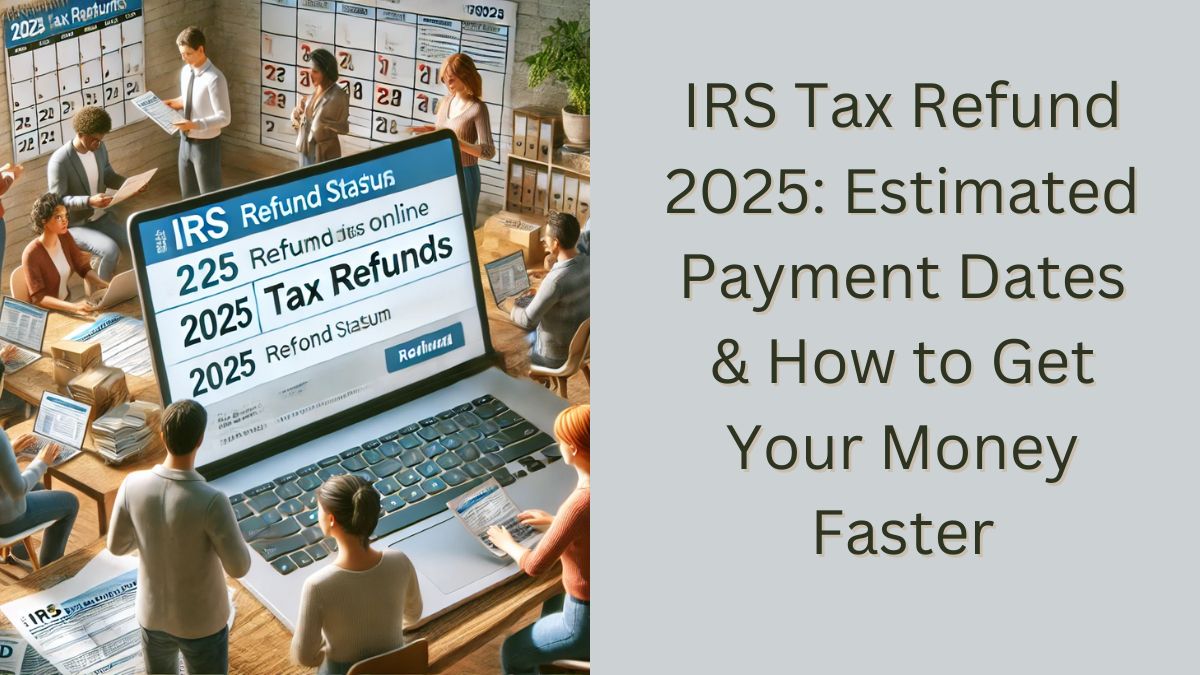Tax season is here, and many Americans are eager to find out when they will receive their IRS tax refunds. Understanding the refund schedule, how different filing methods affect payment speed, and what factors might cause delays can help you plan your finances better. Here’s everything you need to know about IRS tax refunds in 2025.
When Will You Receive Your IRS Tax Refund?
The time it takes to get your tax refund depends on how you file your return and how you choose to receive the money. Here’s a general timeline based on different filing methods:
| Filing Method & Refund Option | Estimated Refund Time |
|---|---|
| E-file with direct deposit | About 3 weeks |
| E-file with a paper check | About 4 weeks |
| Mailed return with direct deposit | 4 to 8 weeks |
| Mailed return with a paper check | 4 to 9 weeks |
To track your refund, you can use the IRS “Where’s My Refund?” tool on their official website.
Estimated Refund Dates for 2025
If you filed your taxes early, you may receive your refund faster. Below is a table with estimated refund dates based on when your return was accepted by the IRS.
| IRS Acceptance Date | Direct Deposit Date | Paper Check Date |
|---|---|---|
| January 27, 2025 | February 17, 2025 | March 10, 2025 |
| February 3, 2025 | February 24, 2025 | March 17, 2025 |
| February 10, 2025 | March 3, 2025 | March 24, 2025 |
| February 17, 2025 | March 10, 2025 | March 31, 2025 |
| February 24, 2025 | March 17, 2025 | April 7, 2025 |
| March 3, 2025 | March 24, 2025 | April 14, 2025 |
| March 10, 2025 | March 31, 2025 | April 21, 2025 |
| March 17, 2025 | April 7, 2025 | April 28, 2025 |
| March 24, 2025 | April 14, 2025 | May 5, 2025 |
| March 31, 2025 | April 21, 2025 | May 12, 2025 |
| April 7, 2025 | April 28, 2025 | May 19, 2025 |
| April 14, 2025 | May 5, 2025 | May 26, 2025 |
| April 21, 2025 | May 12, 2025 | June 2, 2025 |
| April 28, 2025 | May 19, 2025 | June 9, 2025 |
| May 5, 2025 | May 26, 2025 | June 16, 2025 |
| May 12, 2025 | June 2, 2025 | June 23, 2025 |
These are estimated dates and may vary depending on your tax situation.
Why Might Your Tax Refund Be Delayed?
There are several reasons why your refund might take longer than expected:
- Filing Date: If you submit your return during peak tax season (late March to mid-April), processing times may be slower.
- Claiming Tax Credits: Refunds involving the Earned Income Tax Credit (EITC) or the Additional Child Tax Credit (ACTC) take longer because of extra verification checks.
- Filing Method: E-filing is much faster than mailing a paper return.
- Owing IRS Debt: If you owe back taxes, the IRS may use part or all of your refund to cover the balance, which can cause delays.
- Errors on Your Tax Return: Mistakes, missing information, or mismatched data can result in IRS review and processing delays.
How to Get Your Tax Refund Faster
If you want to receive your refund as quickly as possible, follow these tips:
- File Electronically (E-File): The IRS processes e-filed returns faster than paper returns.
- Use Direct Deposit: This method is quicker than waiting for a paper check in the mail.
- Double-Check Your Return: Ensure all information is correct to avoid errors that could delay processing.
- Track Your Refund: Use the IRS “Where’s My Refund?” tool to check your refund status.
- Beware of Scams: The IRS will never call, email, or text you to request personal information. If you receive such messages, they are scams.
The IRS has a clear refund schedule, and most people who e-file and choose direct deposit can expect their money within three weeks. However, some refunds may be delayed due to tax credits, outstanding IRS debts, or errors in tax filings. By filing electronically, opting for direct deposit, and avoiding mistakes, you can speed up the refund process. Make sure to use the IRS “Where’s My Refund?” tool to stay updated on your payment status.
Visit Home
